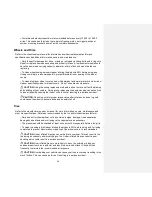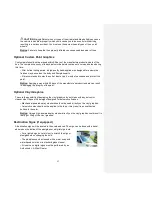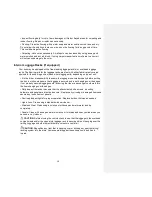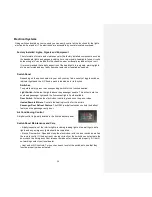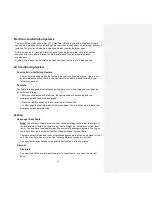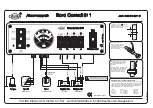
6
Be Prepared for Emergencies
To provide the maximum safety for you and your passengers, it is important that everyone
using and riding in the vehicle is familiar with emergency features such as the location of exits.
It is the driver’s responsibility to make sure everyone is familiar with and understands the
escape routes of the bus.
Escape Routes
Optional Emergency Escape Windows
Are marked with a red sticker that states “EMERGENCY EXIT”
and has bright red release latches. Instructions are listed on
the window.
Emergency Escape Hatch
Located in the ceiling with release handles to help open. Instructions are listed on the
hatch.
Emergency Doors
Can be located in the rear, side or front and with a red “EMERGENCY EXIT” sticker
above them. They are opened by pulling the handle and pushing outward.
Optional Fire Extinguisher(s)
Fire extinguishers are recommended for small fires only.
Read the label for basic instructions and the owner’s guide supplied with the fire
extinguisher for complete details on proper use and operations before using the bus.
Fire Prevention Suggestions:
•
DO NOT overload electrical wiring.
•
DO NOT replace a fuse with one of a higher amp rating.
•
DO NOT store flammable liquids inside the vehicle.
•
DO NOT park over papers, leaves, dry grass or other things that can be ignited if
touched by hot exhaust parts under your vehicle.
Park Safely
In heavy snow or blizzard conditions make sure you clear away any snow around the
base of your vehicle, especially anything blocking the exhaust pipe. Keep checking to
make sure snow has not collected there.
CAUTION
: Engine exhaust can kill you and others in the vehicle. It contains the gas
carbon monoxide (CO) which you cannot see or smell. It will cause unconsciousness
and/or death. If you ever suspect exhaust coming into the vehicle have it checked and
repaired immediately.





















